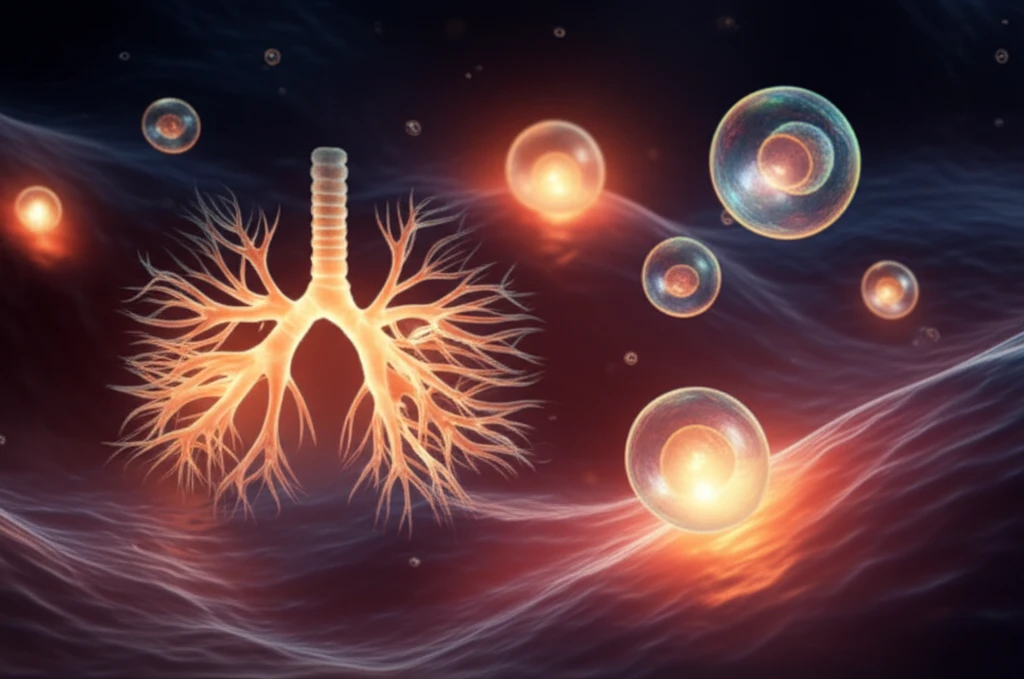
Tiny Bubbles, Big Impact: Liposomes Target Lung Cancer
"Can combining natural compounds with advanced delivery systems offer a less toxic path to lung cancer treatment?"
Chemotherapy, while effective in controlling cancer growth, often struggles to distinguish between healthy and cancerous cells, leading to harsh side effects. These side effects significantly impact a patient's quality of life, highlighting the urgent need for more targeted and less toxic treatment options.
To overcome these limitations, researchers have increasingly focused on targeted drug delivery systems, such as liposomes. Liposomes are spherical structures composed of lipid bilayers that can encapsulate and transport drugs directly to cancer cells, minimizing damage to healthy tissues. Several liposomal drugs are already in clinical use, demonstrating their potential in cancer therapy.
Now, scientists are exploring the power of combining natural compounds with liposomal delivery. This approach aims to harness the potential of less toxic natural substances like parthenolide and ginsenoside CK, while using liposomes to ensure they reach their target effectively. One promising strategy involves modifying liposomes with the tLyp-1 peptide, which actively seeks out and binds to lung cancer cells.
How Targeted Liposomes are Revolutionizing Lung Cancer Treatment

A recent study published in Artificial Cells, Nanomedicine, and Biotechnology investigates the effectiveness of combining parthenolide and ginsenoside CK within tLyp-1 liposomes for lung cancer treatment. The researchers hypothesized that this targeted delivery system could enhance the anti-cancer effects of these natural compounds while minimizing toxicity.
- In Vitro Success: In laboratory studies using A549 human lung cancer cells, the tLyp-1 liposomes loaded with parthenolide and ginsenoside CK increased the levels of reactive oxygen species (ROS) within cancer cells. Elevated ROS levels are known to induce mitochondrial apoptosis, a process of programmed cell death in cancer cells.
- Targeted Entry: The liposomes were shown to enter cancer cells through a combination of receptor-mediated uptake and micropinocytosis, followed by escape from endosomes and lysosomes – cellular compartments that would otherwise degrade the drugs.
- In Vivo Efficacy: In living models, the tLyp-1 liposomes exhibited a greater antitumor effect compared to simply administering the combined drugs. Importantly, this enhanced efficacy came with minimal toxicity.
The Future of Natural Compounds in Cancer Treatment
This study adds to the growing body of evidence supporting the use of natural compounds in cancer treatment, especially when combined with advanced delivery systems like liposomes. By selectively targeting cancer cells, these therapies hold the potential to improve patient outcomes and reduce the debilitating side effects associated with traditional chemotherapy.
The tLyp-1 peptide shows promise as a targeting ligand, effectively guiding liposomes to lung cancer cells. Further research is needed to optimize these delivery systems and explore their effectiveness against different types of cancer.
Ultimately, the goal is to develop cancer treatments that are not only effective but also gentler on the body, allowing patients to maintain a better quality of life throughout their treatment journey. This research represents an important step toward that future.
